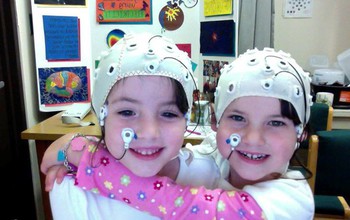Impact
New tool detects reading problems early, allows for early intervention
A researcher studying the brain waves of children developed a way to detect reading problems before they become evident allowing for earlier interventions
September 29, 2017
This material is available primarily for archival purposes. Telephone numbers or other contact information may be out of date; please see current contact information at media contacts.
Reading disabilities affect millions of Americans and can have long-term effects from childhood into adulthood. Dyslexia alone affects 5 to 10 percent of the U.S. population.
An NSF-funded researcher has developed a tool that uses a child’s brain waves to predict reading problems before they start. This is important because interventions for children are effective, but they need to start early.
The researcher is now developing a diagnostic tool that can double or even triple the time window for implementing an intervention.
NSF Directorate(s):
Directorate for Social, Behavioral and Economic Sciences
Locations
New York
Related Awards
#1252975 CAREER: NEURAL-COMPUTATIONAL ANALYSIS OF READING (AND READING IMPAIRMENT) IN INDIVIDUALS
Related Websites
Neuroscience research into dyslexia leads to 'brainprints': https://www.nsf.gov/discoveries/disc_summ.jsp?cntn_id=138315
Brain prints reveal children's reading difficulties: https://www.nsf.gov/news/special_reports/science_nation/brainprints.jsp
Neuroscientist receives NSF CAREER grant: https://www.nsf.gov/cgi-bin/good-bye?https://www.binghamton.edu/inside/index.php/inside/story/5582/neuroscientist-receives-nsf-career-grant/
This NSF Impact is one of thousands of research outcomes made possible by NSF that help fuel the U.S. economy, enhance national security and sustain U.S. global leadership by advancing knowledge. You can search for more NSF Impacts at https://www.nsf.gov/impacts.
Get Impacts by Email



